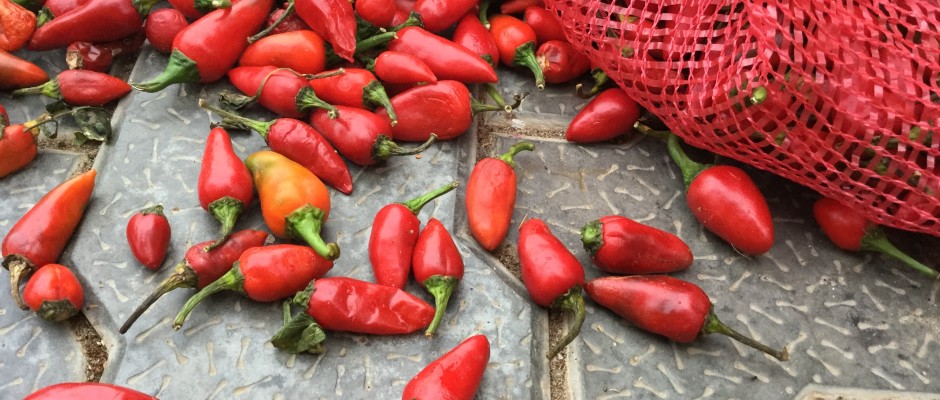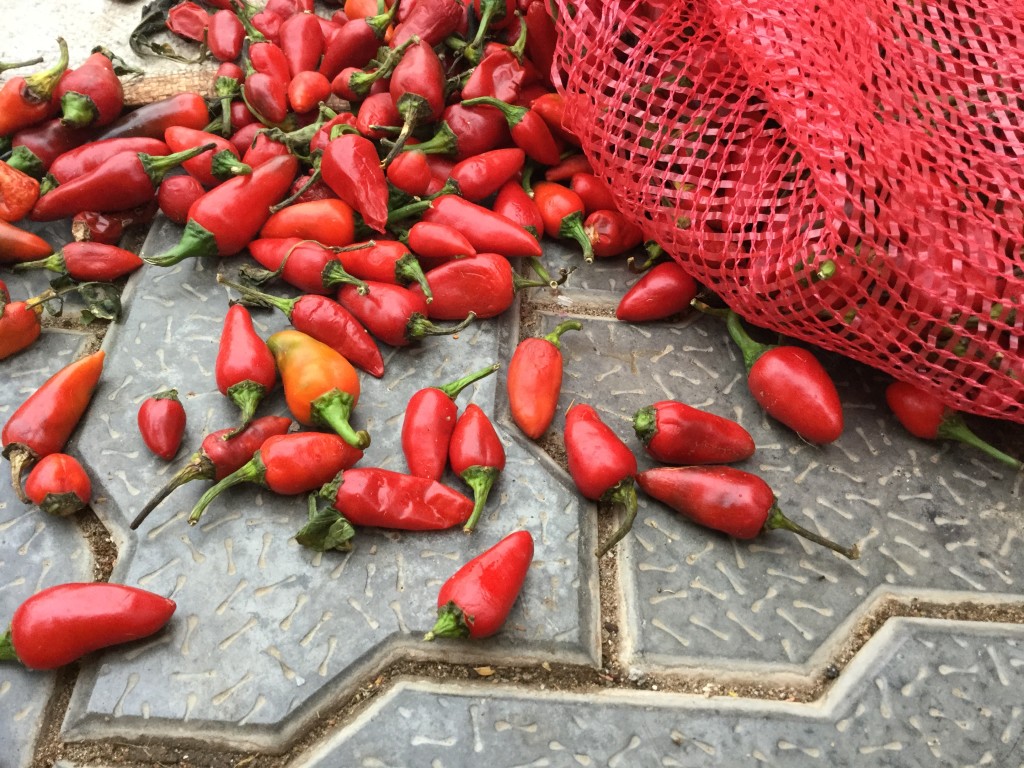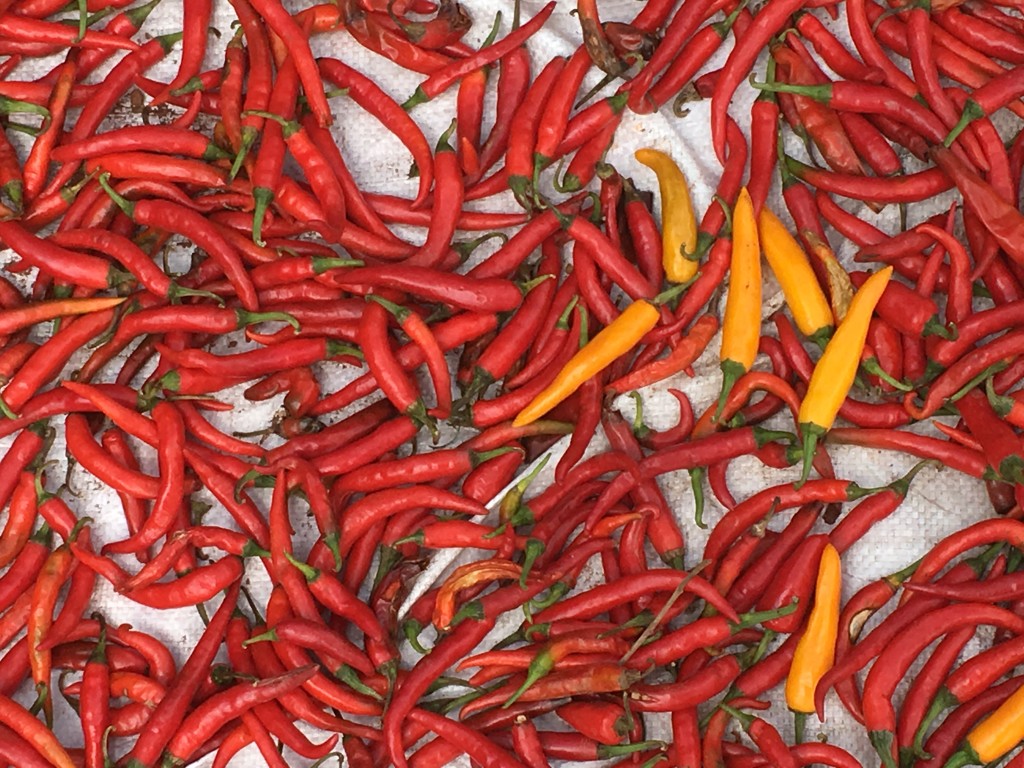Hindu Metroplus, fiery when it rains
The monsoons are the right time for the green chilly saplings to thrive and grow. In a few months they will be ready for picking.While the first crop of chillies are plucked when green,the subsequent crops do start to show a smattering of ripened red chillies .Towards the end of the harvest the last few cycles of chillies are allowed to ripen,to be sundried and stored as dried red chillies,for continued use throughout the year.
Most often we use either the green chilles or the darker dried chillies in our Indian cuisine.The ripe red ones rarely find their way into every day chutneys and gravies.But,they are absolutely one of my favourite spice additives to cook with ! For starters they look so pretty on the plant. A picture perfect image is of a lush green shrub ,dotted with petite white flowers with flashes of bright red fruit that catch the attention from all angles. And when adding it to a pot of anything simmering on the stove,it’s an instant appetite wetter.Sometimes when I think the skin on my fingers will not be able to bear the fiery onslaught,I use kitchen scissors to snip them into little circles and these pretty up a green papaya salad or a fresh crab salad to perfection !
I always marvel at how the seasoned kitchen hands handle kilograms of these chillies with such ease.A one time lesson of accidentally brushing the red chilly infused hands across my cheek was a lesson that has literally seared into my DNA !!!…one that I’m unlikely to forget…EVER !
The pandu mirapakaya pachadi as it is known in telugu tastes as fierce as it looks.This ‘ripe red chilly’ pickle is famous in Andhra cuisine and sends the taste buds on a gluttony trail from the very moment it lands on the tongue. How we wait for a bottle of this home made delicacy ,that is most often the result of a family recipe handed down over many many generations !
As soon as the summer heat abates there we go,lunging eagerly across the table to get hold of a spoonful of this mouthwatering condiment and mix it in with a helping of curd rice. As the glistening residue of the chilly oil leaves an enticing smear after the fingers scoop up heaping mouthfuls, the plate soon becomes a marbled palette of red and white.The deliciousness continues until every last bit of this combination is wiped clean by sliding every available finger of the right hand across the length and breadth of the plate or the banana leaf on special occasions.
The reason we love the Thai red curry is again because it makes wonderful use of the chilly in it’s ripened state.The flavour has a fruity element that comes through despite the extreme hit of spice. While the number of available chilly varieties are truly staggering, the ones used most commonly in India are the Guntur, Kashmiri, byadagi, kanthari and mundu chilies.
A chilli jam is yet another way of preserving the ripe red chilly.It’s cooked with red capsicum and sugar along with pectin which results in a sticky, sweet, spicy preserve that pairs brilliantly with sharp cheeses and meats.
Interestingly the word capsaicin ,which is a compound prevalent in chillies is derived from the word capsicum.And yet the capsaicin in capsicums is virtually non-existant which is why it lacks in pungency. The hotter the chilly, the greater the amount of capsaicin.
When eaten in the right quantities capsaicin aids in pain relief and is also known as the receptor for the TRPV1 gene.It is stated that “the function of TRPV1 is detection and regulation of body temperature.”It is therefore responsible for recognising the sensation of heat and pain.So the heat generated by the capsaicin triggers a response in the brain to produce an anti-inflammatory effect that will counter cell damage. It also helps in reducing headaches, nausea and certain skin conditions.
This is again a reminder of why certain ingredients exist in many of our traditional recipes.As long as the intake is not in excess of what it should be it will enhance the well being of the body instead of inflicting damage. Most often than not one hears that spice is bad for health.That’s true when it makes up for the better part of what should otherwise be a wholesome meal.If on the other hand the benefits of food are understood and valued ,it truly can be the best medicine for longevity of physical and mental wellness.




No comments yet.